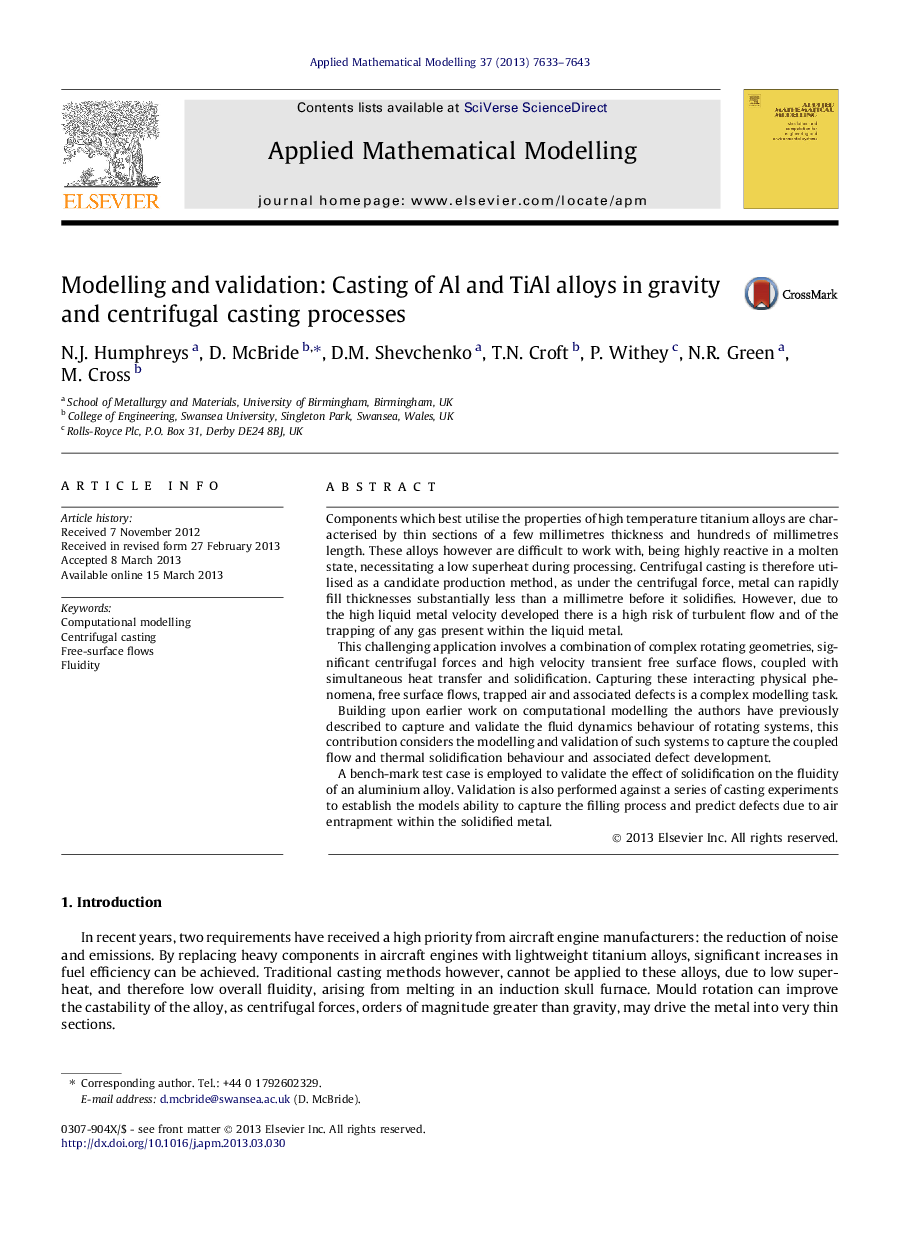| Article ID | Journal | Published Year | Pages | File Type |
|---|---|---|---|---|
| 1704815 | Applied Mathematical Modelling | 2013 | 11 Pages |
Components which best utilise the properties of high temperature titanium alloys are characterised by thin sections of a few millimetres thickness and hundreds of millimetres length. These alloys however are difficult to work with, being highly reactive in a molten state, necessitating a low superheat during processing. Centrifugal casting is therefore utilised as a candidate production method, as under the centrifugal force, metal can rapidly fill thicknesses substantially less than a millimetre before it solidifies. However, due to the high liquid metal velocity developed there is a high risk of turbulent flow and of the trapping of any gas present within the liquid metal.This challenging application involves a combination of complex rotating geometries, significant centrifugal forces and high velocity transient free surface flows, coupled with simultaneous heat transfer and solidification. Capturing these interacting physical phenomena, free surface flows, trapped air and associated defects is a complex modelling task.Building upon earlier work on computational modelling the authors have previously described to capture and validate the fluid dynamics behaviour of rotating systems, this contribution considers the modelling and validation of such systems to capture the coupled flow and thermal solidification behaviour and associated defect development.A bench-mark test case is employed to validate the effect of solidification on the fluidity of an aluminium alloy. Validation is also performed against a series of casting experiments to establish the models ability to capture the filling process and predict defects due to air entrapment within the solidified metal.
